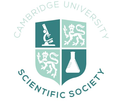Speaker
Dr Maria Christophorou
Description
The discovery that somatic cells can be reprogrammed to a pluripotent state and instructed to differentiate into various cell types promises to revolutionise regenerative medicine. We previously demonstrated that the protein post-translational modification citrullination is induced upon the introduction of reprogramming transcription (Yamanaka) factors into somatic cells, where it precedes and mediates their reprogramming to induced pluripotent stem (iPS) cells. We have since found that the induction of citrullination is a general, evolutionarily conserved feature of cell reprogramming and tissue regeneration. The cells that activate citrullination are mutually exclusive with the iPS cells, suggesting that they act as “active bystanders” that mediate reprogramming in a non-cell-autonomous manner. We have made the unexpected discovery that bystander cells release citrullinated chromatin to the extracellular space, in a process akin to Neutrophil Extracellular Traps. Blocking of extracellular chromatin components reduces reprogramming, as does pharmacological interference with chromatin sensing, innate immunity signalling pathways. Extracellular citrullinated chromatin is also a feature of tissue regeneration. Our data suggest that cells that “fail” to reprogramme in fact have an active role in supporting the establishment of pluripotency. Additionally, they open a new research avenue into the study of extracellular chromatin as a cell communication mechanism that mediates cell fate transitions and present an opportunity to exploit this mechanism to enhance reprogramming and regeneration while minimizing genetic manipulation.

 Cell fate transitions and the secret life of histones
Cell fate transitions and the secret life of histones